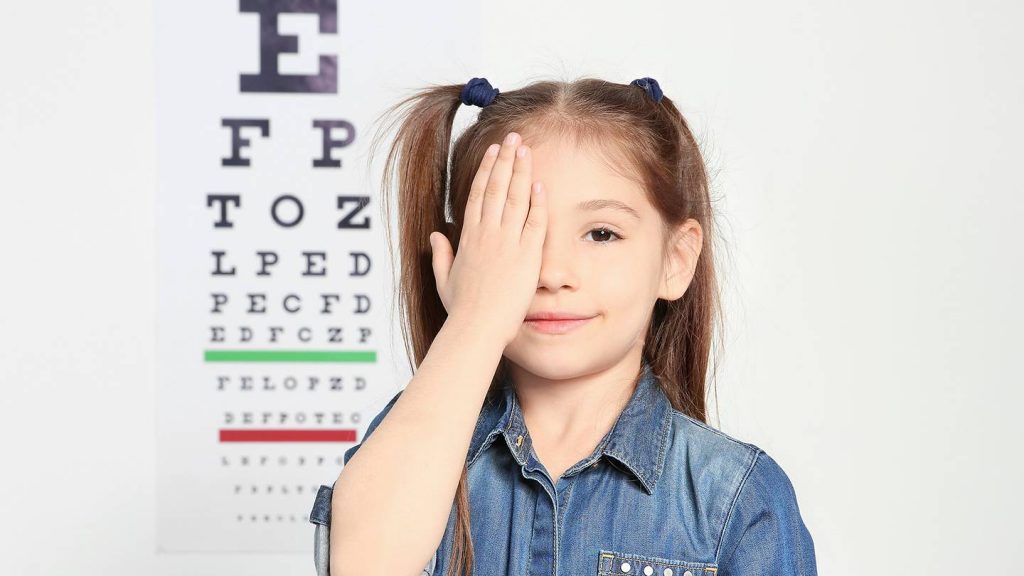
Myopia in children - early diagnosis and treatment in Batumi
When parents find out that their child has myopia, they ask the following questions:
- What causes myopia?
- How should we treat it?
- What influences the development of myopia?
During the last decades, the number of children with myopia is gradually increasing. To date, according to various researchers, every third child has some form of myopia. Scientists wonder what influences these statistics: the spread of computers and various gadgets, reading, changes in diet/nutrition, or something else? But the main question for parents is, what can be done to slow or stop the progression of myopia in children? Or, if the child is already myopic, will his vision deteriorate each year?
What are the dangers of myopia in children?
We do not consider the cost of glasses or contact lenses that need to be replaced every year. The earlier myopia is formed (7-8 years), the higher the probability that in adulthood (after 20 years) we will have the so-called High myopia (this term refers to a correction of -6.25D or more). And in the case of high myopia, there are risks of developing other serious eye diseases – cataracts, retinal degeneration, etc.
Book an appointment with our ophthalmologist
What causes myopia in children?
Why some teenagers develop myopia and others don’t. The issue of inheritance is important here. In other words, if both parents are myopic, then there is a good chance that the child will also be myopic. However, it is impossible to predict which child will carry this gene and which will not.
Some researchers note the negative impact of reading in children. Spasm of accommodation during excessive reading or near reading for long periods of time can increase the risk of developing myopia.
The cause of the onset and progression of myopia is not completely clear. Recently, new interesting data appeared: the more time a child spends in a closed space (especially at the age of 6-10), the less often myopia appears or progresses more slowly! (British researchers in 2011 collected data from 10,400 children over the age of 10).
Ophthalmologists have tried different methods of controlling myopia in Batumi
Over the years, ophthalmologists have tried different methods of controlling myopia. In the arsenal of ophthalmologists, you can find various medicines, vitamins and dietary supplements designed to improve blood circulation, improve trophism and increase the adaptive capacity of the eyes. Various laser-magnetic, vibrating color stimulation and electrophoresis are used for the same purpose. Various exercises are performed for eye muscles. We also paid attention to osteopaths, massage therapists and acupuncture.
Different types of training glasses were invented – with small holes, progressive (multifocal or special lenses that correct the “peripheral hyperopic defocus of myopia”) and other specialized lenses. Rigid contact lenses (so-called “night lenses“) are used in orthokeratology. Different surgical interventions have been developed, which aim at mechanical fastening of the walls of the inner membrane of the eye – retroscleroplasty with collagen, sectorial scleroplasty, circular scleroplasty and others.
One of the more recent developments is the long-term use of atropine in low, homeopathic doses. But it should be noted that it binds sclera receptors and inhibits its growth. Each of these methods was received with great enthusiasm by both doctors and parents. Short-term follow-up (1-4 years) shows promising results. Some researchers report an 85% success rate in nearsighted people in slowing the process of vision loss.
Glasses or contact lenses to control of myopia in children
Another method of myopia control is its purposeful correction with glasses or contact lenses. The idea was that partial correction reduced the need for instant focus. Unfortunately, research has shown that such a method does not reduce the progression of myopia, but on the contrary, it can accelerate its development. Myopia usually develops in elementary or middle school. The peak of visual impairment occurs at the age of 10-12 years. During adulthood, these processes slow down.
It is necessary to understand that in order to “control” myopia in children, it is important to correct it in time and strictly follow the instructions of the ophthalmologist.
Myopia in children prevention and treatment in Batumi
Myopia in children prevention and treatment in Batumi by the best ophthalmologists in Georgia from the Sagittarius Clinic Batumi. Contact us via chat on this page and make an appointment.
